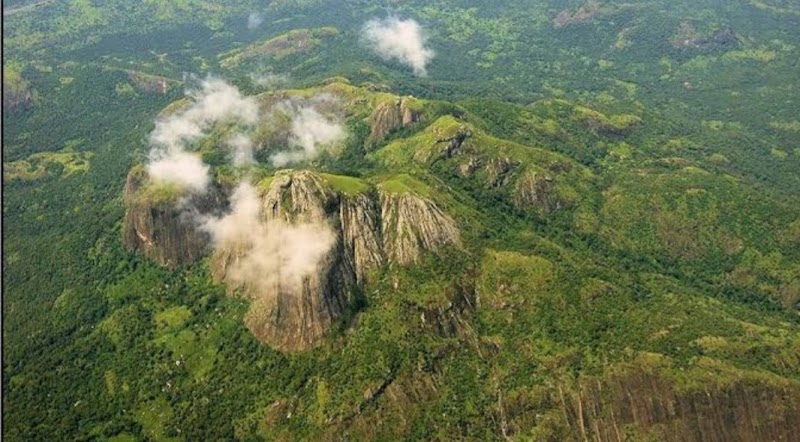
Experience Makurdi’s annual cultural dance events—dynamic celebrations where Benue’s rich traditions come alive in motion. From powerful Tiv performances to exhilarating Idoma rhythms, these festivals provide a perfect blend of cultural immersion and accessible adventure.
Arrive Early to Secure Good Viewing
Cultural shows can get crowded quickly—plan to arrive at least an hour before the event starts to find a good spot and acclimatize to the vibration of the gathering.
Wear Comfortable Shoes
Venues can have uneven terrain—durable, closed-toe shoes offer protection and support for standing or moving around without discomfort.
Stay Hydrated and Bring Water
The heat and energetic environment can drain you fast. Carry a refillable bottle; local vendors offer drinks but being prepared is best.
Engage Respectfully with Performers
Dance traditions carry deep cultural meaning—ask before photographing close-ups or joining in to honor community values and trust.
Rhythms Alive: Exploring Annual Cultural Dance Events in Makurdi, Benue
In the heart of Makurdi, Benue State, the pulse of culture beats strongest during the annual cultural dance events—vibrant gatherings where tradition meets movement and community tells its story through body and rhythm. These festivals are not staged exhibitions; they are living celebrations rooted in history and local identity, inviting visitors into a world where every step, sway, and stomp reverberates with meaning.
Held predominantly during the dry season, these events offer both residents and travelers an unfiltered experience of Benue’s diverse ethnic heritage. The Tiv people’s intricate dances, with their fluid yet deliberate moves, speak of past struggles, rites of passage, and joy, while the Idoma groups contribute with energetic, percussive displays that challenge stamina and coordination alike.
Attending a cultural dance event in Makurdi isn’t just about watching; it’s an adventure into movement and meaning. Venues vary from open-air stages under sweeping skies to compact community squares where the ground itself seems to breathe with the dancers’ energy. The terrain is easy and accessible, encouraging a close connection between participant and performer, breaking down barriers. Expect to stand or sit on simple stools or mats, with a chance to engage directly with the performers and learn basic steps.
The joy is enhanced by the surrounding environment: warm winds that carry drums’ beats, the aroma of smoked foods and earth, and the sight of colorful costumes that shimmer as dancers spin and leap. Yet, this experience respects its roots. The dances are a force fiercely conserved by the community, demanding attention and respect rather than distraction or disruption.
Practical tips before you dive in: pack light, breathable clothing and sturdy shoes suitable for outdoor standing and occasional unpaved surfaces. Hydration is key; local vendors provide refreshing drinks, but bring your own water bottle for convenience. Arrive early to absorb the build-up, find good vantage points, and engage with locals who are eager to share stories bridging generations.
Whether you’re a cultural enthusiast or an adventurous traveler, Makurdi’s annual dance events offer a uniquely dynamic experience. They combine heritage with the immediacy of lived performance, inviting you to witness and touch a culture that dances through time with both grace and grit.
Nearby Trips
All Adventures
Boat Charters
Water Activities
Adventures near Makurdi, Benue
Discover the unique and memorable adventures that make Makurdi, Benue special.
Frequently Asked Questions
When do the annual cultural dance festivals typically take place in Makurdi?
Most cultural dance events occur during the dry season, particularly between November and March, when weather conditions are suitable for outdoor gatherings.
Are these dance events open to tourists, or are they private community occasions?
While primarily local celebrations, many events welcome visitors who show respect and interest. Engaging with local guides can facilitate access and immersive experiences.
What kind of physical activity is involved for attendees?
Attending involves standing, mild walking around the venue, and potentially light participation in dances. No advanced physical skill is mandatory, but comfort and readiness to engage are helpful.
Are there opportunities to learn dance steps or participate actively?
Yes, many festivals offer interactive sessions for visitors under community supervision, allowing you to learn basic movements and connect deeper with the culture.
What local customs should visitors be aware of during these events?
Respect is paramount: avoid interrupting performers, ask before taking photos, and honor local protocols around sacred dances or rituals.
Is there food available at these cultural events?
Local vendors often sell traditional foods and refreshments, giving attendees a chance to sample Benue’s culinary flavors alongside the dance festivities.
Recommended Gear
Lightweight, Breathable Clothing
Keeps you cool during outdoor events under the warm Benue sun.
Comfortable Closed-Toe Shoes
Necessary for uneven outdoor ground and extended periods of standing.
Refillable Water Bottle
Supports hydration in hot, bustling festival environments.
Sun Protection (Hat and Sunscreen)
Protects from sun exposure during daytime outdoor performances.
Local Insights
Hidden Gems
- "The hidden viewpoint behind Wurukum Hill offers panoramic snaps of open-air dance settings aligned with sunset hues."
- "Small community squares in Adoka village host intimate dance gatherings rarely visited by tourists."
Wildlife
- "Look for the vibrant weaver birds weaving nests overhead during outdoor performances."
- "Occasional glimpses of monitor lizards on the outskirts where festival grounds meet scrublands."
History
"These dance events preserve centuries-old traditions of the Tiv and Idoma peoples, reflecting stories of survival, community milestones, and spiritual communication passed down over generations."
